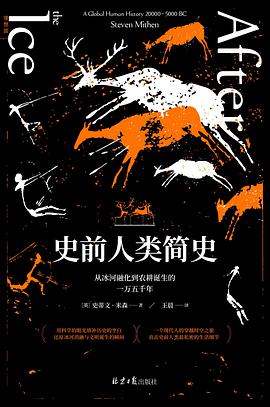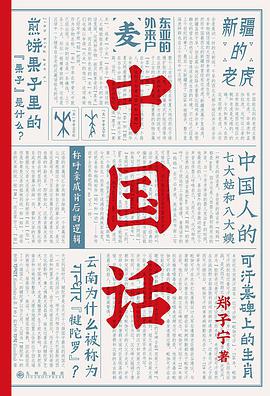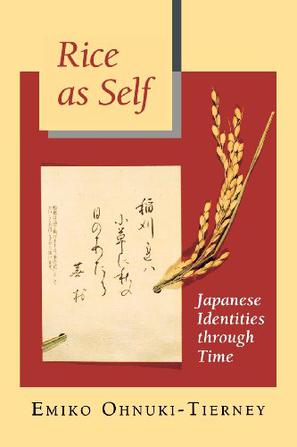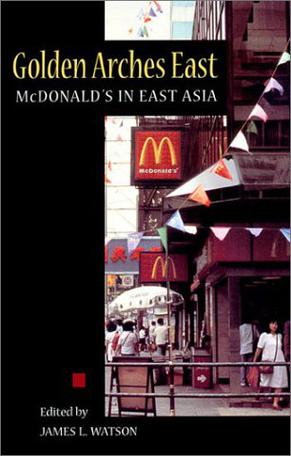-

史前人类简史
★追溯人类历史中关键的一万五千年,用科学的眼光填补历史的空白
公元前20000年的地球,寒冷、干燥、多风,大气中满是尘埃,四处横亘着冰川和沙漠。人类随时面临着灭绝的危险,只能同严寒和干旱斗争,艰难地生存下去。然而,他们尚不知道自己正身处巨变的前夕——随后的一万年,气候从干冷转向湿热,地球从冰河期转向间冰期。
就在这段时期,人类从居无定所的狩猎采集者转变成了定居农耕者。他们驯化了新的动植物、发明了农业,建造了城镇;他们开始拥有风俗和习惯,形成更复杂的社会结构,并最终创造了我们所拥有的文明。
他们没有书信、没有日记,甚至没有文字用以描绘他们的生活和见证的事件,在仰赖书面记录的历史学家眼中,他们的生活一片空白。考古学家检查他们留下的垃圾,以严谨的科学还原这段神秘的历史。
★英国国家学术院院士、认知考古学先驱,用前沿的技术与靠谱的考古证据,呈现有趣的史前史
汇聚考古学、遗传学、植物学、地质学、气候学、语言学、基因历史学的前沿技术,深入世界各地的考古遗址,结合科学与人文,重现不复存在的远古世界。
不列颠的甲虫遗骸,证明了冰河时期的严峻低温;比利时的桦鼠与仓鼠,标志着全球气候变暖的开端;敲打加工过的燧石条、搭建的火炉、散落的鸟骨,见证了对整个史前世界人类生存至关重要的生火工作。
从古代沉积物中的花粉粒,追踪猎人们从地中海沿岸向东迁徙的足迹,再现史前人类餐桌上美味的天竺葵与藜;从墓室中的驼鹿雕像与狐狸牙齿和鹧鸪腿骨制成的珠子首饰,探索宗族、阶级、宗教信仰的原始面貌。
石质工具、陶器、火炉、食物残渣、动植物遗骸、被遗弃的定居点、壁画、墓葬、基因、语言……作者米森抽丝剥茧,以有趣生动的讲述全面完整的史前史。
★通过一个现代人的穿越时空之旅,横跨五大洲,再现史前人类的生活全景与细节
史前人类是头脑空空的野蛮人吗?这些人发明农业、筑造城镇,最后创造了辉煌的文明。
北欧的猎人在风雪中追击驯鹿,法国的艺术家在山洞绘制壁画,中国的制陶人同时驯化了稻米。还有一群人在乌克兰用猛犸骨骼建造房屋,在苏格兰烤榛子,在死海西岸的住所为亲人的头骨涂上石膏,并在土耳其的加泰土丘建造最古老的定居点之一。
他们驯化了绵羊和山羊,驯化了谷物与豆类,完成了人类从狩猎和采集向农业生活的转变。他们搭建村庄、打磨石器、储备食物、围绕篝火开展聚会,建立社群秩序与宗教信仰。
穿越时空,回到石器时代,一同体验冰河时期之后面对全球巨变的史前人类,如何在努力生存的同时创造历史,成为人类文明鼎盛的基石。
----------------------
内容简介:
公元前20000年,最后一个冰河时代的顶峰——大气层中弥漫着浓重的尘埃,沙漠和冰川横亘在广阔的陆地上。人类即使能够生存下来,也时刻面临着灭绝的威胁。随后的一万五千年,全球骤然变暖,气候变迁带来农业、城镇和文明的兴起。新驯化的动植物开始出现,人们的生活方式从狩猎和采集转向农业,人类的历史进程彻底转变了方向。
《史前人类简史》综合了考古学、遗传学和环境科学的最新研究成果,对从冰河融化到农耕诞生这一万五千年的人类历史进行了一次全面考察。作者史蒂文·米森想象了一位现代旅行者约翰·卢伯克。读者将跟随着他的脚步,一同探索五大洲的各处史前遗迹,纵览全球人类的进化图景,并思索这一特殊时期如何为我们所处的现代世界奠定根基。
-

中国话
☆侦探小说般层层推进的语言学科普
☆九大领域诠释中国话的前世今生
☆重新发现中国人的文化史
▎编辑推荐
九大领域解读中国话的起源与传播
重新发现中国人的文化史
◎粮食作物称谓的传播
——为什么东非马达加斯加岛和印尼群岛上“米”的发音都非常相似?
——为什么中国普遍北方吃粳米,南方吃籼米?
——为什么中国台湾的阿美人会把“小米”供奉为神灵?
◎家畜动物称谓的兴衰
——为什么历史上“猪”的曾用字“彘”“豕”“豝”都消失了?
——为什么楚国“虎”的发音——“於菟”和东南亚地区的发音非常相似?
——汉语的“马”是草原上的印欧人传入中国的吗?
◎金属加工冶炼的历史
——为什么青铜器上的铭文会被称作“金”文?
——越南为什么会用“铜”作为他们的基本货币单位?
——“铁”是一个来自西方的词汇吗?
◎血缘亲属称呼的异同
——“爹娘”是比“爸妈”更老土的词吗?
——“哥”什么时候取代了“兄”?
——“妈”(ma)是全世界的语言中对母亲的通称吗?
★名人推荐
本书对“语言中的历史线索”已有非常精彩的论证,深入浅出又饶有意味,但这并不只是“趣味历史”而已……因为语言中异于规律的现象不仅可以提醒我们对结构的重新认识,也可以补齐文化交流中“缺失的一环”,有时是被遗忘的历史。对中国人来说,这样的书实在是太少了。
——知名书评人 维舟
本书内容广博、材料翔实,伴随着优美的文笔徐徐展开,读来有“山阴道上行,使人应接不暇”之感。相信读者诸君读了本书之后,一定会对中国人与中国话之间的互动关系,有更为深刻地了解认识!
——复旦大学中国语言文学系副教授 盛益民
▎内容简介
本书从语言学的角度切入,分别深入探讨了中国的饮食、数字、动物、称谓、地名等方面的文化。一方面,作者从纵向的时间维度,分析语言的发展、演变;另一方面,又从横向的空间维度,探讨不同语言之间的传播、交流。作者借由语言,探索中国人的历史与文化记忆,为我们描绘出一条清晰的、不同民族间的历史发展与文化交流轨迹。
-

My Freshman Year
After more than fifteen years of teaching, Rebekah Nathan, a professor of anthropology at a large state university, realized that she no longer understood the behavior and attitudes of her students. Fewer and fewer participated in class discussion, tackled the assigned reading, or came to discuss problems during office hours. And she realized from conversations with her colleagues that they, too, were perplexed: Why were students today so different and so hard to teach? Were they, in fact, more likely to cheat, ruder, and less motivated? Did they care at all about their education, besides their grades? Nathan decided to put her wealth of experience in overseas ethnographic fieldwork to use closer to home and apply to her own university. Accepted on the strength of her high school transcript, she took a sabbatical and enrolled as a freshman for the academic year. She immersed herself in student life, moving into the dorms and taking on a full course load. She ate in the student cafeteria, joined student clubs, and played regular pick-up games of volleyball and tag football (sports at which the athletic fifty-something-year-old could hold her own). Nathan had resolved that, if asked, she would not lie about her identity; she found that her classmates, if they were curious about why she was attending college at her age, never questioned her about her personal life. Based on her interviews and conversations with fellow classmates, her interactions with professors and with other university employees and offices, and her careful day-to-day observations, My Freshman Year provides a compelling account of college life that should be read by students, parents, professors, university administrators, and anyone else concerned about the state of higher education in America today. Placing her own experiences and those of her classmates into a broader context drawn from national surveys of college life, Nathan finds that today's students face new challenges to which academic institutions have not adapted. At the end of her freshman year, she has an affection and respect for students as a whole that she had previously reserved only for certain individuals. Being a student, she discovers, is hard work. But she also identifies fundamental misperceptions, misunderstandings, and mistakes on both sides of the educational divide that negatively affect the college experience. By focusing on the actual experiences of students, My Freshman Year offers a refreshing alternative to the frequently divisive debates surrounding the political, economic, and cultural significance of higher education—as well as a novel perspective from which to look at the achievements and difficulties confronting America's colleges and universities in the twenty-first century. -

教育人类学
本书虽是一本教育人类学著作,但作者却在本书中综合了他的绝大部分研究成果,深入了他的绝大部分教育思想。换言之,他的绝大部分教育思想集中反映在他的这本书中了。因此,这是博尔诺夫的非常重要的著作,若要研究博尔诺夫的教育思想,不能不读他的这本著作。 -

Rice as Self
Are we what we eat? What does food reveal about how we live and how we think of ourselves in relation to others? And why do people have a strong attachment to their own cuisine and an aversion to the foodways of others? In this engaging account of the crucial significance rice has for the Japanese, "Rice as Self" examines how people use the metaphor of a principal food in conceptualizing themselves in relation to other people. Emiko Ohnuki-Tierney traces the changing contours that the Japanese notion of the self has taken as different historical Others - whether Chinese or Westerner - have emerged, and shows how rice and rice paddies have served as the vehicle for this deliberation. Using Japan as an example, she proposes a new cross-cultural model for the interpretation of the self and other. -

Golden Arches East